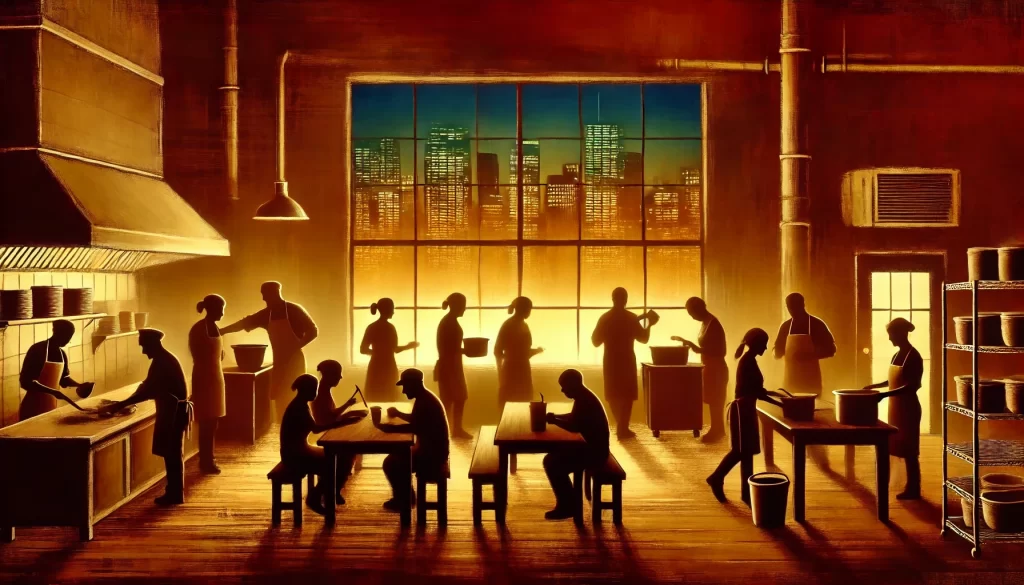
It’s 11:25 p.m. and I’m seated in a bustling Indian restaurant in Toronto.
The scent of cardamom and cumin hangs in the air. The servers speak in Hindi and Punjabi as they glide between tables. The families eating here laugh over biryani and butter chicken, and I don’t need to peek behind the kitchen door to know that the people making the food grew up with these recipes. Everything here is unmistakably Indian – until you look just a little closer.
Because the business? That’s Canadian. The commerce is regulated by Canadian laws. The taxes are paid to Canadian governments. The ingredients are sourced from Canadian farms. The wages support Canadian households. The rent goes to Canadian landlords. The benefit, economic and otherwise, flows squarely into Canadian society.
This is where the narrative often breaks.
Too often, immigrants are seen as recipients of opportunity – granted a seat, allowed entry, given a chance. But what this moment makes clear is that immigrants are not just filling seats at the table. They are also running the kitchen. They are also hiring the team. They are also paying the bills. They are, without declaration or drama, helping build the very country they are perceived to merely occupy.
This isn’t just a cultural story. It’s also an economic one.
And yet, the conversation around immigration – especially in election years or economic downturns – tends to get flattened into tropes of “burden” and “backlog,” or spirals into faceless metrics: how many, how fast, how skilled. But immigration isn’t just a matter of intake; it’s a question of impact. What happens after arrival is the real story. The restaurants open. The logistics companies scale. The childcare services expand. The healthcare support grows. The housing gets built. And the country – slowly but steadily – gets stitched together by people who weren’t born here, but now belong here.
And that’s the deeper complexity. Immigrants aren’t just bringing culture. They’re bringing infrastructure. Not just tradition, but transaction. Not just community, but contribution.
It’s tempting to think of immigrant businesses as niche or ethnic enclaves, as if they exist in isolation. But they ripple outward. A South Asian restaurant doesn’t just serve South Asians. It buys local produce. It hires accountants. It pays utilities. It contributes to municipal growth. It plays its part in the orchestration of a national economy. This is not about curry or chapatis. It’s about commerce.
There’s a subtle irony in this: the very thing that once symbolized foreign control and extractive trade – the global commerce, that ironically once enabled India’s colonial past – is being inverted. No one is being colonized here. No one is taking. Immigrants are creating, circulating, and contributing in ways that are both deeply personal and quietly systemic. The colonial model was about draining. The immigrant model is about giving back, tenfold.
What we need is a shift in how we talk about immigration. Not just from the lens of compassion or diversity, though those are vital. But from the lens of return on investment. A well-structured immigration system is not a humanitarian cost. It is a competitive advantage. Nations like Canada are not just multicultural – they are multicivilizational, built on the layered ingenuity of people who come from everywhere and remake their identities without erasing their histories.
And at the heart of that is a certain kind of humility that immigrants carry – an understanding of what it means to start again. To work the double shift. To learn the unspoken rules. To accept the odd jobs while building long-term dreams. There is courage in that. And creativity. And an uncanny sense of responsibility – because when you don’t take belonging for granted, you often give more than you take.
In leadership and in life, we talk about value creation. We use frameworks like stakeholder capitalism, systems thinking, and distributed models of innovation. But walk into any immigrant-run business – be it a corner store, a trucking company, or a late-night restaurant – and you’ll see these theories playing out in real time. The owner is the manager, the strategist, the HR department, and the financial controller. The business model is adaptive, resourceful, and resilient by necessity.
This isn’t just entrepreneurship. It’s an everyday MBA in motion.
So the next time we talk about immigration, maybe we don’t start with assimilation. Maybe we start with appreciation. Not in a sentimental or patronizing way – but in a pragmatic one. Let’s stop measuring immigrants only by how quickly they become “Canadian” and start recognizing how deeply they are already shaping what Canada is becoming.
That restaurant I was in? It wasn’t a cultural moment. It was an economic metaphor. One that tells a truer story of immigration than any policy paper or political talking point ever could.
It reminded me that nation-building isn’t always found in grand speeches or official programs. Sometimes, it’s in the quiet hum of a kitchen long after 11 p.m., where people are working hard, feeding others, and growing a country they now call home.